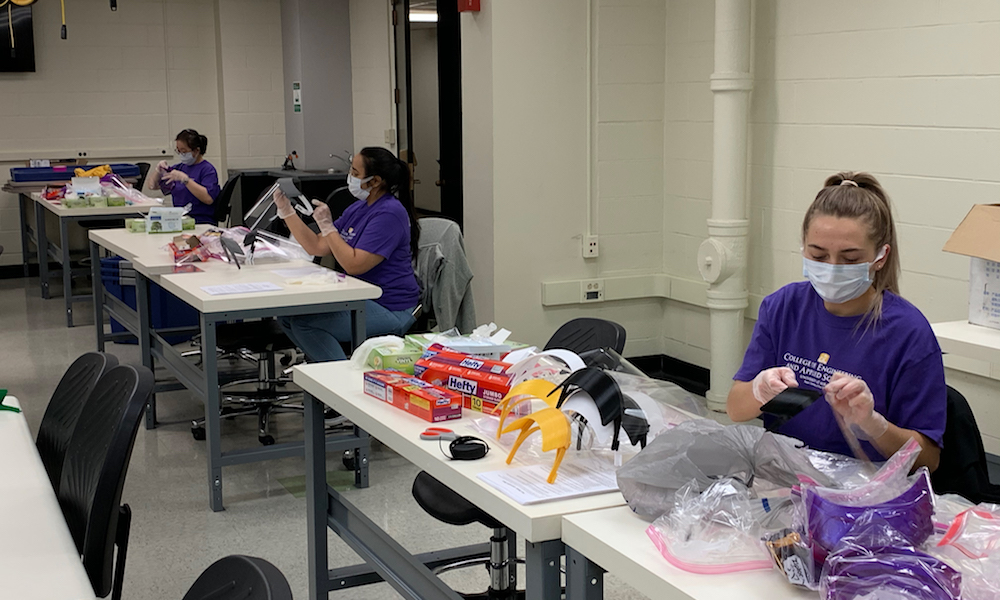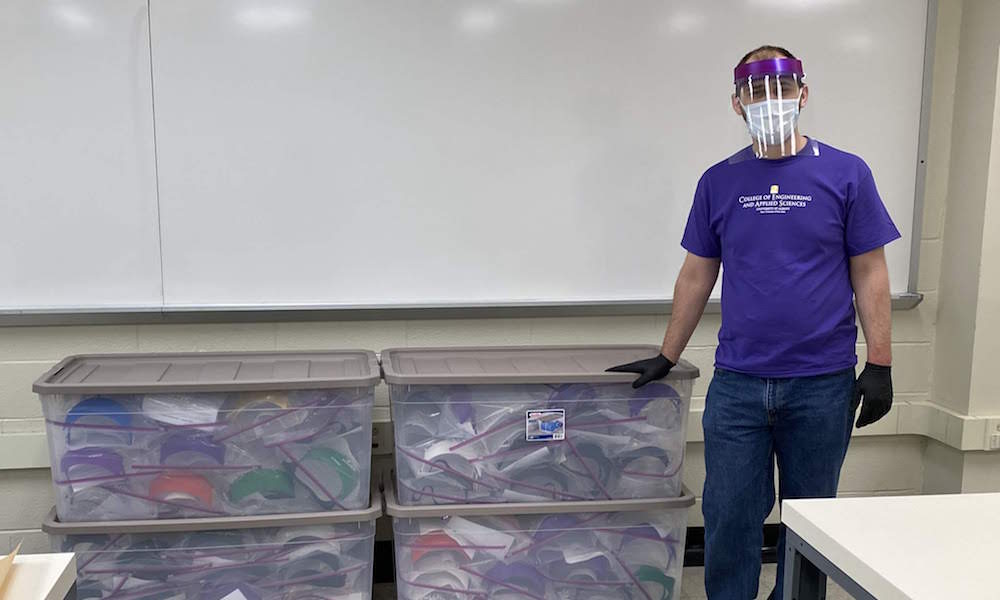Add 3-D printers to the list of weapons being used in the fight against the spread of COVID-19. Starting at the end of March, the University at Albany began asking for volunteers to help 3-D-print plastic face shields for Capital Region healthcare workers and first responders, who are most at risk of catching the highly contagious virus.
The call for volunteers comes as “essential” manufacturers and universities across the nation are helping mass-produce face shields for hospitals and other medical practices where there have been critical shortages of Personal Protective Equipment (PPEs) such as face masks and disposable gowns. Leading the effort at UAlbany is Professor Jonathan Muckell from the school’s department of electrical and computer engineering. “It’s incredible, considering we’re coordinating this whole project remotely,” says Muckell about the campaign. Muckell has mobilized around two dozen student volunteers and another dozen community volunteers that in the last two weeks have printed, put together and donated 250 face shields to local hospital personnel and first responders. And Muckell says that’s just the tip of the iceberg. “We’re hoping to make a thousand by the end of the month,” he says. “The operation has grown so quickly, and we’re getting faster and faster, making more every day.”

Muckell’s team comprises both students and community volunteers, who do everything from procuring printer materials and printing face shield parts to constructing the face shields and packaging them up for delivery. “Making these face shields feels like [doing] something that actually matters,” says Diego Silva, a computer science student at UAlbany, who volunteers 10-12 hours a week delivering supplies to printers and reaching out to recruit more deliverers. “Seeing how badly this virus has affected the entire world, I really wanted to do whatever I could to help fight it.”
Indeed, the COVID-19 outbreak has brought out the best in many in the community in a number of ways. Around 20 3-D printers have been loaned from community members to students, who agreed to print face shield parts from home. In addition to this, S.T.E.A.M Garden, a cooperative workspace in Albany, donated all of its high-output 3-D printers to the cause, and there are a number of people in the community who’ve volunteered their personal 3-D printers to crank out the face shields components. Professor Muckell says that it takes about three hours total to print each face shield. “There are some designs that you could do in maybe 40 minutes of print time,” says Muckell. “But we chose three hours because of the quality of the shield; it’s nationally approved, and it can be sterilized and used over and over again.”

The assemblage of the face shields takes place entirely at UAlbany, with volunteers wearing gloves and face masks while maintaining social distancing. The university even has an emergency response coordinator to identify which facilities and areas need the face shields the most. “The school was pushing for us to do something and really get involved,” says Anya Ross, an electrical and computer engineering student at UAlbany who, after receiving an email from Professor Muckell, volunteered to build and package face shields. “I was totally in because I was trying to find somewhere to help already.”
Want to volunteer your time to UAlbany’s cause? Contact the College of Engineering and Applied Sciences’ Assistant Dean and Director of Communications and Marketing, Daphne Jorgensen, at [email protected].


